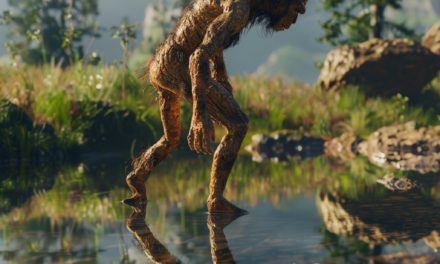Introduction
Welcome, curious minds, to a journey through the fascinating world of DNA—the blueprint of life itself! Prepare to embark on an adventure filled with twists, turns, and surprising discoveries as we unravel the mysteries of this remarkable molecule.
Overview of the Significance of DNA Discovery
The discovery of DNA stands as one of humanity’s crowning achievements, akin to uncovering the Rosetta Stone of life itself. It’s like finding the instruction manual hidden in the attic that explains everything from how to assemble a bookshelf to the secrets of the universe. DNA, short for deoxyribonucleic acid (quite a mouthful, we know), has fundamentally transformed our understanding of genetics, evolution, and the very essence of what it means to be alive.
From its modest beginnings as an enigmatic molecule to its modern-day applications in medicine, forensics, and beyond, DNA has left an indelible mark on the fabric of human knowledge. It’s like the silent conductor orchestrating the symphony of life, guiding the development of organisms from single-celled creatures to complex beings like us, complete with a penchant for pizza and procrastination.
Importance of Understanding DNA in Modern Science
In today’s world of CRISPR gene editing, personalized medicine, and crime-solving DNA databases, understanding DNA is more than just a fun fact—it’s downright essential. As the legendary geneticist Francis Collins once mused, “DNA is like a master blueprint; if you have the right blueprint, you can build anything.” And we’re not just talking about building IKEA furniture here (although that’s pretty important too).
DNA holds the key to unlocking the secrets of life itself, from deciphering the genetic code to unraveling the mysteries of inherited diseases and genetic traits. It’s like having the ultimate cheat code for understanding how living organisms work, allowing us to peek under the hood and tinker with the engine of life itself (metaphorically speaking, of course).
Predecessors to the Discovery of DNA
Before Watson and Crick burst onto the scene with their double helix revelation, there were the unsung heroes of genetics laying the groundwork for their groundbreaking discovery. Think of them as the opening acts before the headliner takes the stage—the warm-up acts that set the scene for the main event.
From Gregor Mendel’s pea-plant experiments to Friedrich Miescher’s isolation of nucleic acids, these early pioneers paved the way for future generations of geneticists to follow. Without their curious minds and tireless dedication, we might still be fumbling around in the dark ages of genetics, scratching our heads and wondering why peas come in different shapes and sizes.
Early Theories and Observations about Heredity
Long before DNA was a twinkle in Watson and Crick’s eyes, philosophers and scholars were grappling with the mysteries of heredity. Aristotle pondered the concept of “blending inheritance,” imagining traits mixing together like ingredients in a cosmic smoothie. Meanwhile, other ancient thinkers speculated about the transmission of traits from one generation to the next, laying the groundwork for future geneticists to unravel.
Little did these early thinkers know that the answers to their questions lay hidden within the elegant structure of DNA, waiting to be unlocked by the intrepid explorers of the scientific world. It’s like they were playing a game of genetic hide-and-seek, with DNA hiding in plain sight all along.
Contributions from Scientists like Gregor Mendel and Friedrich Miescher
Enter the stage, Gregor Mendel and Friedrich Miescher, the dynamic duo of DNA discovery! Mendel’s experiments with pea plants may have seemed like a quirky hobby to his neighbors, but little did they know he was laying the groundwork for modern genetics. Meanwhile, Miescher’s discovery of nucleic acids in white blood cells may have gone unnoticed by the scientific community at the time, but it laid the foundation for future breakthroughs in DNA research.
Without Mendel’s green-thumbed insights and Miescher’s meticulous lab work, we might still be stuck in the dark ages of genetics, wondering why some traits seem to disappear like socks in the laundry.
Milestones in DNA Research
The road to unraveling the secrets of DNA was paved with milestone moments that forever changed the course of science. From Griffith’s transformative experiment demonstrating bacterial transformation to Chargaff’s rules on DNA base composition, each discovery brought us one step closer to unlocking the mysteries of this enigmatic molecule.
It’s like a detective story with twists and turns at every corner, with scientists playing the role of Sherlock Holmes and DNA the elusive Moriarty, always staying one step ahead of their pursuers. But in the end, it was the perseverance and ingenuity of the scientific community that ultimately cracked the case wide open, revealing the true nature of DNA for all to see.
The Discovery of the DNA Double Helix Structure
And now, the moment you’ve all been waiting for: the discovery of the DNA double helix structure! It’s like finding the missing piece of a jigsaw puzzle or discovering the recipe for grandma’s secret sauce—except this time, it’s the recipe for life itself.
Thanks to the pioneering work of Rosalind Franklin and Maurice Wilkins, who captured images of DNA using X-ray crystallography, and the brilliant insights of James Watson and Francis Crick, who famously declared, “We have found the secret of life,” we now have a detailed blueprint of the molecule that governs all living organisms.
It’s like the grand finale of a fireworks display, with Watson and Crick’s double helix revelation lighting up the sky and leaving audiences in awe of the beauty and complexity of the natural world.
Implications and Applications of DNA Discovery
But the story doesn’t end there—far from it! The discovery of DNA has opened up a Pandora’s box of possibilities, with profound implications for medicine, agriculture, and criminal justice. From diagnosing and treating genetic diseases to genetically modifying crops for increased yield and resilience, the applications of DNA technology are as vast as they are diverse.
It’s like having a Swiss army knife of science, with DNA serving as the ultimate tool for tackling some of the greatest challenges facing humanity. Whether it’s curing diseases, feeding the world, or solving crimes, DNA has proven itself to be the Swiss army knife of science, capable of tackling a wide range of challenges with ease.
Legacy and Future Directions
As we reflect on the legacy of DNA discovery, it’s clear that its impact on science and society is immeasurable. From revolutionizing our understanding of genetics to empowering us to address some of the greatest challenges facing humanity, DNA continues to inspire and captivate scientists and laypeople alike.
As we look to the future, the possibilities are endless, with ongoing advancements in DNA technology promising to unlock even greater insights into the mysteries of life. It’s like we’re standing on the edge of a vast ocean of possibilities, with DNA as our compass guiding the way to new horizons of discovery and innovation.
Conclusion
In conclusion, the discovery of DNA stands as a testament to human curiosity, ingenuity, and perseverance. From its humble beginnings to its far-reaching implications, DNA has forever changed the way we view ourselves and the world around us. As we celebrate this remarkable achievement, let us remember the countless individuals who contributed to our understanding of DNA and the endless possibilities that lie ahead.





